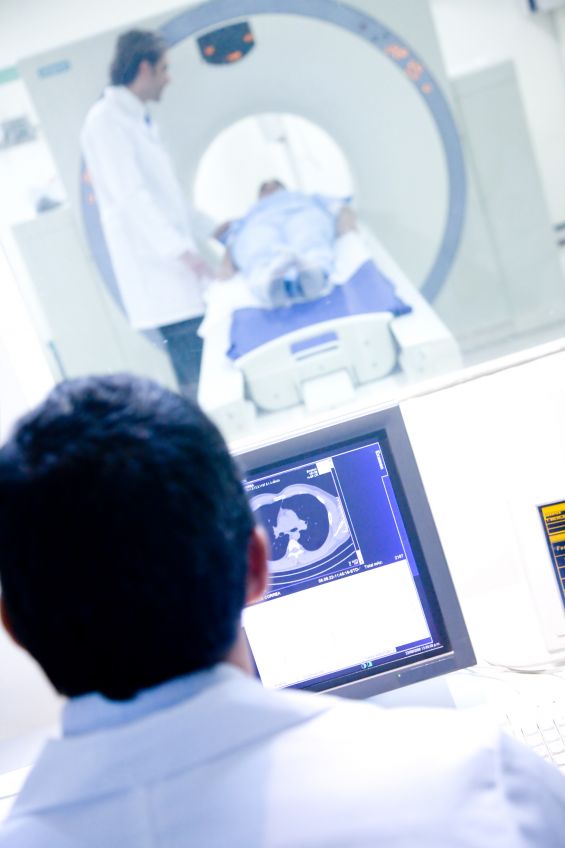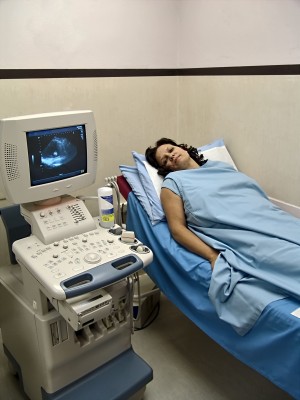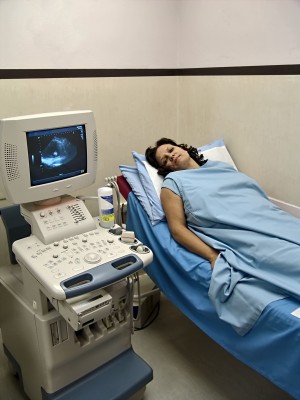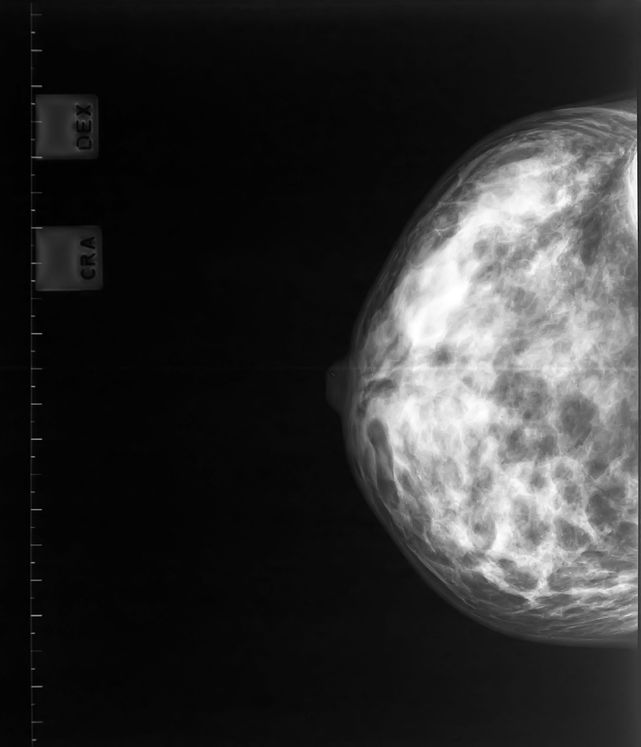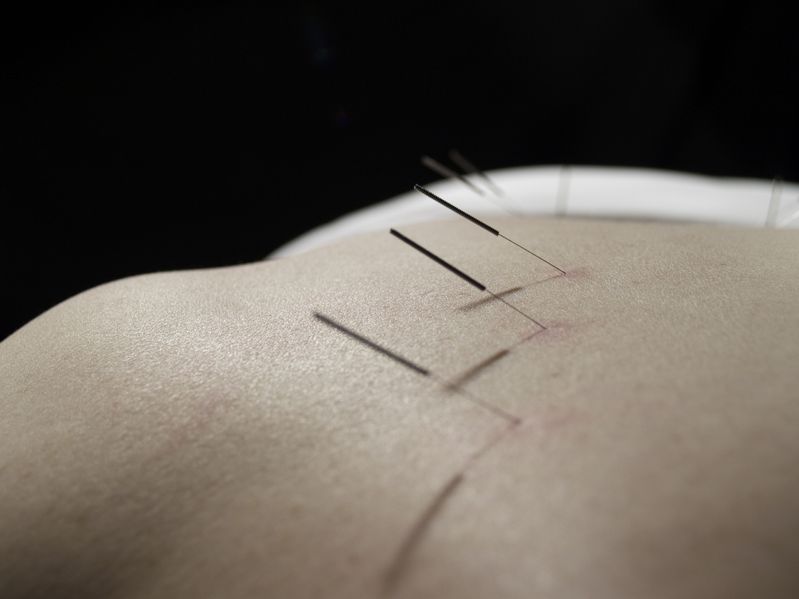Like chemotherapy, targeted therapies are drug therapies, but they are often given over a longer period of time.
These medicines are different from most chemotherapy drugs because they attack specific elements of the cancer cells and are less likely to harm normal cells.
There are five targeted therapy drugs publicly funded in New Zealand (see below).
Many targeted therapy drugs are given intravenously and you may have a special device called a port-a-cath inserted into your chest wall or a PICC line in your arm to help medical staff give these drugs easily on a regular basis. This will save a nurse having to find a vein in your arm or hand each time you need treatment.
New targeted therapies are being developed all the time and clinical trials are underway to investigate the effectiveness of these newer drugs. See below for information about targeted therapies not yet funded in New Zealand and find out more about access to new medicines here.
Targeted therapies funded in New Zealand
Anti-HER2 therapies
Trastuzumab (brand names Herceptin® or Herzuma®). This drug is used in women with HER2-positive breast cancer and works by blocking the chemical signals that tell this type of cancer cells to grow. Trastuzumab is a monoclonal antibody drug, designed specifically to target and block a particular molecule - in this case, the HER2 protein.
It is given by intravenous infusion over a 12-month period and is now fully subsidised in New Zealand, thanks to a prolonged campaign by BCAC and others.
Side-effects: trastuzumab is usually extremely well tolerated with any side effects being very rare. Very few women may experience flu-like symptoms, but these should become less severe as your treatment programme progresses.
In some cases, trastuzumab can cause heart problems. This can range from very mild heart damage which results in no symptoms to more serious problems and in rare cases heart failure. Your doctor will discuss these issues with you and monitor your heart during your treatment programme. If you experience shortness of breath or heart palpitations let your doctor know immediately.
Click here for more information on the benefits of trastuzumab (Herceptin) and research about its effectiveness.
Biosimilar versions of Herceptin® (trastuzumab) have now been developed as well. These molecules are not identical to Herceptin®, but are designed to perform in the same way. As of November 1st 2023, Pharmac will be funding Herzuma®, a biosimilar trastuzumab.
Pertuzumab (brand name Perjeta®) This monoclonal antibody drug is used in conjunction with trastuzumab in patients with HER2-positive metastatic breast cancer who have not received prior therapies for their metastatic disease (i.e. as a ‘first-line treatment’). It works by inhibiting different proteins that cause HER2-positive breast cancers to grow. Results from the CLEOPATRA clinical trial reported in 2014 showed an extraordinary survival benefit of 15.7 months for patients who received this drug. Pertuzumab is Medsafe registered and publicly funded in New Zealand for many HER2-positive metastatic breast cancer patients. It is not yet funded by Pharmac for use in early breast cancer. The most common side-effects of pertuzumab are diarrhoea, nausea, fatigue and rash.
Click here for a fact sheet on pertuzumab (Perjeta).
Tyrosine kinase inhibitors
Lapatinib (brand name Tykerb®) is a tyrosine kinase inhibitor for the treatment of HER2-positive metastatic breast cancer. This drug is given in pill form and fights HER2-positive breast cancer by attacking the HER2 protein at a different site from trastuzumab.
Lapatinib is funded in New Zealand only for those with HER2-positive metastatic breast cancer who have not already received trastuzumab for their advanced disease (i.e. as a first-line treatment only). However, in other countries lapatinib is approved for later-line use for those whose metastatic breast cancer has progressed on trastuzumab.
Side-effects: The most common side effects of lapatinib are diarrhoea, skin rash, vomiting and fatigue. Dosages can be adjusted and other medicines used to ease these problems. In rare cases lapatinib can result in minor heart damage.
Click here for a fact sheet on lapatinib (Tykerb).
Antibody-drug conjugates
Trastuzumab emtansine (brand name Kadcyla®) This drug is used in patients with HER2-positive metastatic breast cancer who have received prior trastuzumab and chemotherapy separately or together and either received prior therapy for metastatic disease, or who relapsed within 6 months of completing adjuvant therapy. As it is used after earlier treatments for metastatic disease it is known as a ‘second-line’ strategy. Trastuzumab emtansine is an antibody-conjugate drug that combines a cytotoxin (emtansine) that disrupts cell division, growth and functioning, with trastuzumab. The trastuzumab component targets the emtansine component to the HER2-positive tumours, delivering the toxin directly to the tumour cells and reducing effects on other normal cells in the body. Results from the 2017 international clinical trial EMILIA showed patients receiving trastuzumab emtansine had a median overall survival benefit of 5.8 months (30.9 months vs. 25.1 months) compared to those given the combination of capecitabine and lapatinib. This drug is approved by Medsafe and is publicly funded in New Zealand. Common side effects with trastuzumab emtansine may include tiredness, nausea and muscle/joint pain.
Recent data from the KATHERINE international clinical trial has shown that trastuzumab emtansine can also significantly reduce the risk of recurrence of invasive breast cancer (and death) when given to patients with HER2-positive early breast cancer whose tumours have not responded completely to neo-adjuvant (pre-surgery) chemotherapy and trastuzumab treatment. PHARMAC recently announced that trastuzumab emtansine would be funded for use in some patients with HER2-positive early breast cancer and a high risk of recurrence.
Click here to read a fact sheet on trastuzumab emtansine (Kadcyla).
CDK 4/6 inhibitors
Palbociclib (brand name Ibrance®) is one of a group of medicines called CDK 4/6 inhibitors - others are ribociclib and abemaciclib. Only palbociclib is funded in New Zealand, the other two are not. These drugs work by inhibiting particular enzymes that are needed for tumour cells to divide; they interrupt the ‘cell cycle’ and stop the tumours from growing. They are used for treating hormone receptor-positive, HER2-negative metastatic breast cancer. In New Zealand palbociclib is funded for first-, second- or later-line use in these patients. The PALOMA-3 clinical trial showed that adding palbociclib to an oestrogen-suppressing drug called fulvestrant as a second-line treatment for patients who had previously responded to endocrine therapy prolonged overall survival by 6.9 months. This second- or later-line combination of palbociclib with fulvestrant is funded for suitable patients in New Zealand. Palbociclib comes in pill form. Common side effects include anaemia, fatigue, nausea, diarrhoea, vomiting, mouth sores and hair thinning.
Click here to read a fact sheet on palbociclib (Ibrance).
Targeted therapies not yet funded in New Zealand
Anti-HER2 therapies
Sub-cutaneous trastuzumab is an alternative formulation of trastuzumab that can be given by injection rather than by intravenous infusion. This has huge benefits in terms of convenience and efficiency as it can be administered without a lengthy visit to an infusion centre at a hospital. Australia funds this version of this medicine but New Zealand does not. The supplier applied to PHARMAC for funding in 2013, but was told in 2015 that it would only be considered if the product could be made ‘cost-neutral’, i.e. the same as the intravenous formulation. There has been no further progress with this.
Trastuzumab biosimilars are alternative brands of trastuzumab to the original Herceptin® brand. Because trastuzumab is a ‘biologic’ medicine - a monoclonal antibody that has to be grown in a living cell culture system, rather than a drug that can be produced by a purely chemical reaction – the alternative brands are known as ‘biosimilars’ rather than ‘generics’.
Currently, Herceptin® is the only version of trastuzumab that is publicly funded by PHARMAC in New Zealand, but there are several biosimilars now on the global market. This competitive situation has led to price reductions. Four trastuzumab biosimilars have been approved by Medsafe NZ – Herzuma®, Ogivri®, Trazimera® and Kanjinti®. A fifth, Ontruzant®, has not yet been approved by Medsafe. All five trastuzumab biosimilars are publicly funded in Australia. As of 1st November 2023 Pharmac will fund the biosimilar trastuzumab Herzuma®.
Tyrosine kinase inhibitors
Tucatinib (brand name Tukysa®) is a selective HER2 tyrosine kinase inhibitor which was approved by the United States FDA in May 2020 for treatment of HER2-positive metastatic breast cancer. Results of the HER2CLIMB clinical trial presented in May 2020 showed that tucatinib combined with the chemotherapy drug capecitabine demonstrated survival benefits in patients who had already progressed after several lines of treatment. Encouragingly, these benefits were also seen among patients who had brain metastases. Often cancer medicines do not work well for these tumours as there is a ‘blood-brain barrier’ which normally functions to protect the brain, but has the unfortunate side-effect of preventing many medicines from getting into this tissue.
Neratinib (brand name Nerlynx®) is another tyrosine kinase inhibitor. This drug is approved in the United States in combination with the chemotherapy drug capecitabine for those whose HER2-positive metastatic breast cancer has progressed on two previous lines of anti-HER2 therapy (such as trastuzumab, pertuzumab or trastuzumab emtansine). Recent research results have shown that it is also effective in treating early breast cancer that is both HER2-positive and hormone receptor-positive. In New Zealand, Nerlynx® was approved by Medsafe in June 2020. It is not funded by PHARMAC.
For more information on neratinib (Nerlynx) click here.
Antibody-drug conjugates
Trastuzumab deruxtecan (brand name Enhertu®) is an antibody-drug conjugate composed of trastuzumab, which targets the drug to HER2 receptors on breast cancer cells, and deruxtecan, a cytotoxin which then kills those cells. Clinical trials called DESTINY- Breast03 and DESTINY- Breast04 have recently shown that this medicine improves survival in two groups of patients – those whose HER2-positive metastatic breast cancer has returned after first line treatment with trastuzumab and taxanes, and also those with ‘HER2-low’ metastatic breast cancer. HER2-low is a new category – up until now these cancers have been lumped together in the HER2-negative category.
Read more about trastuzumab deruxtecan (Enhertu) here.
Sacituzumab govitecan (brand name Trodelvy®) is an antibody-drug conjugate that blocks cancer cell proliferation by interfering with DNA repair. The antibody sacituzumab targets the drug to a DNA-enzyme (topoisomerase 1) complex in the cell and the govitecan molecule binds to the DNA and causes it to break, thus halting cell replication. In April 2020, a Phase III trial called ASCENT was stopped early because sacituzumab-govitecan worked so well in patients with triple negative metastatic breast cancer, it was not necessary to continue the trial. On this evidence, sacituzumab govitecan was given accelerated approval by the FDA in the United States in April 2020. It is publicly funded in Australia (March 2022) and England (July 2022), but is not approved by Medsafe or funded by PHARMAC in New Zealand. BCAC has contacted the pharmaceutical company Gilead Sciences to encourage them to apply for Medsafe registration and PHARMAC funding for Trodelvy and to establish a cost-share programme for NZ patients until funding is secured.
CDK 4/6 inhibitors
Ribociclib and Abemaciclib. As explained above, only one CDK 4/6 inhibitor, palbociclib, is funded in New Zealand to be used with an endocrine therapy such as fulvestrant or an aromatase inhibitor in those with hormone receptor-positive metastatic breast cancer. Two other CDK 4/6 inhibitors are ribociclib (brand name Kisqali®) and abemaciclib (brand name Verzenio®). All three have been shown to improve survival and each offers slightly different benefits. All three are publicly funded in Australia and the UK.
To read more about ribociclib (Kisqali), click here.
mTOR, PI3K and AKT inhibitors
mTOR, PI3K and AKT are three enzymes that interact in a signalling pathway that is vital for regulating normal cell proliferation. However, in many cancers this pathway is overactive leading to uncontrolled cell growth. Inhibitors of AKT, mTOR and PI3K can therefore be useful in treating cancer by bringing this process under control.
Everolimus (brand name Afinitor®) is an mTOR inhibitor. It stops a particular protein called mTOR from working properly. mTOR controls other proteins that trigger cancer cells to grow. It is used in the treatment of hormone receptor-positive, HER2-negative metastatic breast cancer in post-menopausal women, in conjunction with the aromatase inhibitor exemestane after failure of letrozole or anastrozole. It is only used in patients whose tumour has tested negative for HER2.
Everolimus is not Medsafe approved or publicly funded for breast cancer in New Zealand. It has been funded in Australia since 2014. In July 2018 BCAC applied to PHARMAC to have this medicine funded. In July 2019, BCAC was informed that this application had been declined by PHARMAC.
Read more about everolimus (Afinitor) here.
Alpelisib (brand name PIQRAY®) is an inhibitor of an enzyme called PI3K which is part of a biochemical pathway that normally controls cell proliferation in our bodies. In some cancers, the gene encoding PI3K is mutated (called a PIK3CA mutation) and PI3K is over-expressed, contributing to tumour growth. Alpelisib can inhibit PI3K and help to reduce the growth of cancer cells. Novartis, the manufacturer of alpelisib, supplies it along with a test for the PIK3CA mutation, as a product called PIQRAY.
In May 2019 the USA FDA approved PIQRAY for use with fulvestrant to treat those whose hormone receptor-positive, HER2-negative, PIK3CA-mutant metastatic breast cancer had progressed on endocrine therapy. In the SOLAR-1 phase III clinical trial, those receiving this combination had had median progression-free survival of 11.0 months, compared to only 5.7 months for those receiving fulvestrant alone. There is an Australian-based clinical trial with alpelisib (called CAPTURE) under way at present (July 2022), but it is not open to New Zealand patients. PIQRAY was funded in England in July 2022.
Current clinical trials with mTOR, PI3K and AKT inhibitors include:
CAPTURE: A Phase II Australian study using alpelisib (PI3K inhibitor) as a later-line treatment for hormone receptor-positive, HER2-negative metastatic breast cancer that has returned after treatment with a CDK 4/6 inhibitor in patients who test positive for the PIK3CA mutation in a blood test (circulating tumour (ct) DNA test).
BYLieve: Phase II American trial of alpelisib with fulvestrant or letrozole for the treatment of PIK3CA-mutant, hormone receptor-positive, HER2-negative metastatic breast cancer that has progressed on CDK 4/6 inhibitor therapy.
LOTUS: Final results from this Phase II international trial using ipatasertib (an AKT inhibitor) and paclitaxel for the treatment of triple negative metastatic breast cancer were presented in May 2020. Those receiving ipatasertib had median overall survival of 25.8 months compared to 16.9 months for those receiving only paclitaxel.
IPATunity170: Phase III follow-up to LOTUS, investigating ipatasertib plus the immunotherapy drug atezolizumab (Tecentriq®) plus paclitaxel for triple negative metastatic breast cancer.
INAVO120: Phase III trial of a PI3K inhibitor (GDC-0077) plus palbociclib plus fulvestrant for PIK3CA-mutant, hormone receptor-positive, HER2-negative locally advanced or metastatic breast cancer.
PARP inhibitors
This group of drugs has shown promising results in trials with women who have triple negative breast cancer and/or hereditary breast cancer caused by mutations to the BRCA1 and BRCA2 genes. PARP inhibitors are also useful for some types of ovarian cancer which are associated with BRCA gene mutations. A PARP is an enzyme which repairs everyday damage done to our DNA, but it also repairs cancer cells damaged by chemotherapy drugs. PARP inhibitors stop the PARP enzyme from repairing damaged cancer cells and thus allow chemotherapy drugs to work more effectively.
Several PARP inhibitors are being tested in clinical trials, but so far only olaparib (brand name Lynparza®) and talazoparib (brand name Talzenna®) have been commercialised for use against HER2-negative metastatic breast cancer in women with BRCA mutations. Both come in pill form. In New Zealand, olaparib is funded for treatment of ovarian cancer but not breast cancer.
You can read more about olaparib (Lynparza) here.
Immunotherapy drugs (also called immune checkpoint inhibitors)
These drugs, called immune checkpoint inhibitors, are synthesised monoclonal antibodies designed to lock on to specific molecular targets in our bodies. They are designed to attach to a protein called PD-L1, which normally acts as a ‘brake’ or ‘checkpoint’ on the immune system. In cancer, this checkpoint system is not always helpful as a stronger immune response can help to control the cancer. When the checkpoint inhibitor blocks PD-L1, it unleashes the brake on the immune system, allowing it to attack the cancer cells.
Pembrolizumab (brand name Keytruda®) is an immune checkpoint inhibitor that is useful in treating several types of cancer. It is funded in New Zealand for treating advanced melanoma, and recently funding was also approved for lung cancer. Breast cancer clinical trials currently under way with pembrolizumab and other similar drugs are producing very promising results, particularly in triple negative breast cancers that test positive for the tumour masking protein, PD-L1. In the United States, the FDA has approved pembrolizumab for use in both early and metastatic triple negative breast cancer.
Atezolizumab (brand name Tecentriq®) is another checkpoint inhibitor. It has been shown in clinical trials to improve survival in patients with triple negative metastatic breast cancer whose tumours have high PD-L1 expression. Tecentriq® is not PHARMAC-funded, but the supplier Roche has applied to PHARMAC for this and at present offers a Cost Share Programme (contact nz.costshare@roche.com for more information).
14 July 2022
